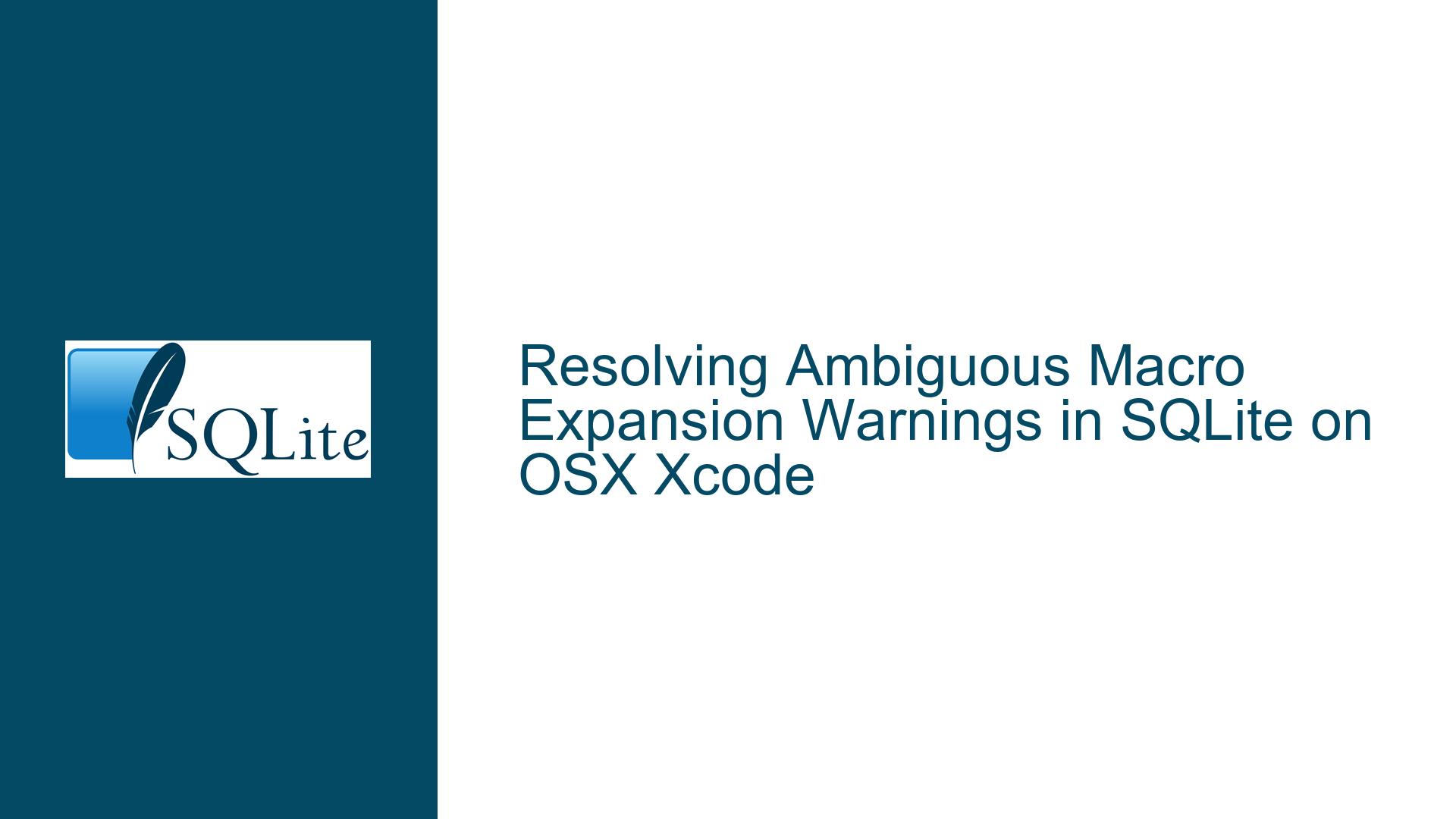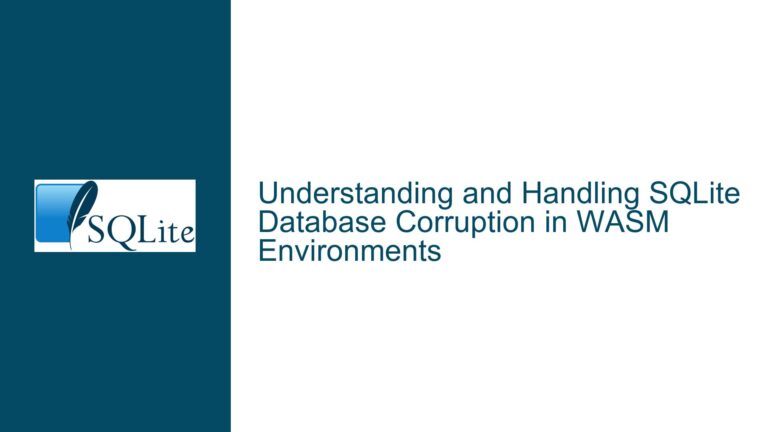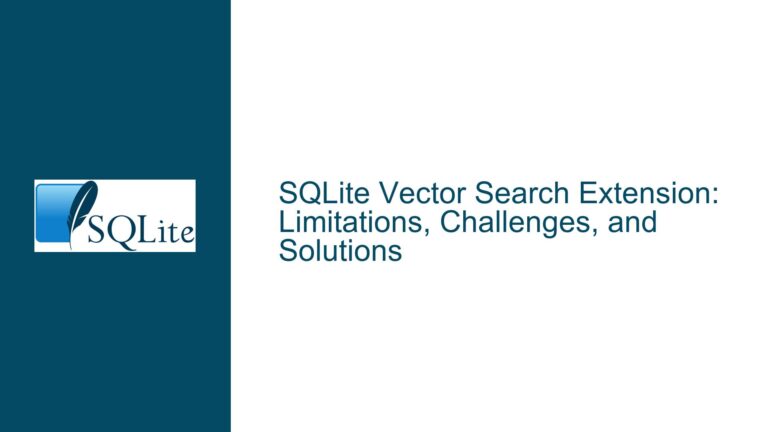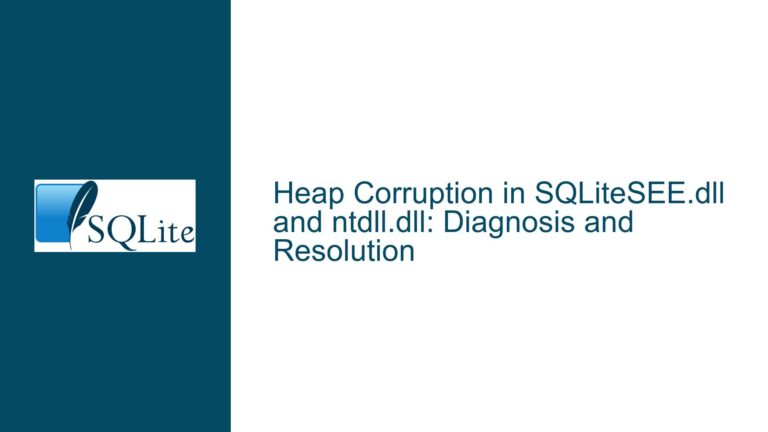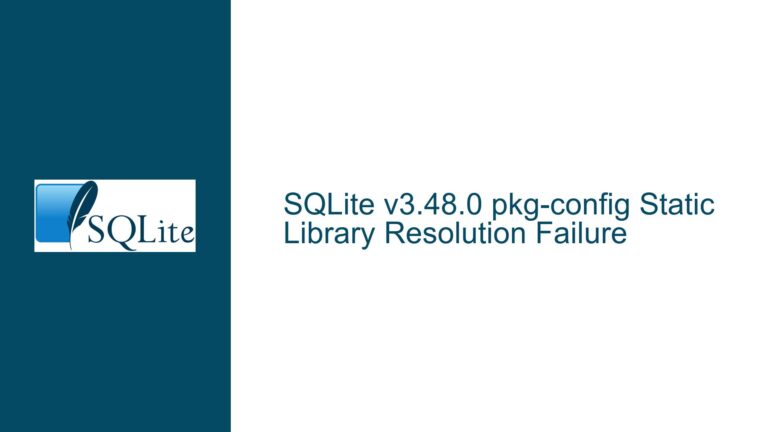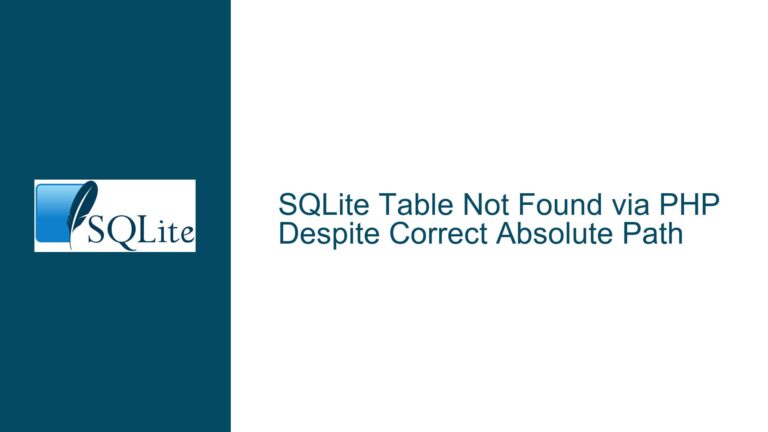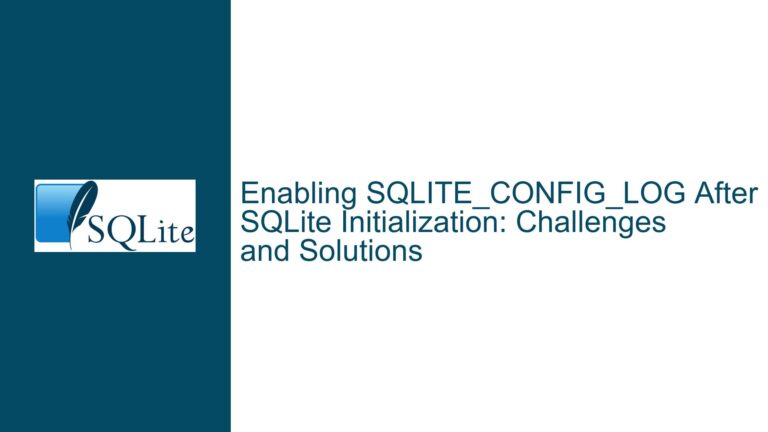Resolving Ambiguous Macro Expansion Warnings in SQLite on OSX Xcode
Issue Overview: Ambiguous Macro Expansion Warnings in SQLite on OSX Xcode
When building software on OSX with Xcode that depends on SQLite, developers may encounter warnings related to the ambiguous expansion of the MAX macro. These warnings arise due to conflicting definitions of the MAX macro in both the SQLite source code and the system header file /usr/include/sys/param.h. The issue is particularly problematic because it generates a large number of warnings, cluttering the build log and making it difficult to identify other potential issues in the code.
The core of the problem lies in the fact that both SQLite and the system headers define the MAX macro, but with slightly different syntax. SQLite defines it as:
#ifndef MAX
# define MAX(A,B) ((A)>(B)?(A):(B))
#endif
while the system header /usr/include/sys/param.h defines it as:
#ifndef MAX
#define MAX(a,b) (((a)>(b))?(a):(b))
#endif
The difference in syntax—specifically, the extra set of parentheses around the comparison in the system header—causes the compiler to flag the SQLite definition as ambiguous. This ambiguity triggers warnings during the build process, even though the functionality of the macro is essentially the same in both cases.
Possible Causes: Conflicting Macro Definitions and Compiler Behavior
The root cause of the ambiguous macro expansion warnings is the presence of multiple definitions of the MAX macro in the codebase. This situation typically arises when a project includes both system headers and third-party libraries that define similar macros. In this case, the conflict is between SQLite’s internal definitions and the system’s definitions in /usr/include/sys/param.h.
The issue is exacerbated by the way the C preprocessor handles macro definitions. When the preprocessor encounters a macro, it replaces the macro with its definition. If multiple definitions of the same macro exist, the preprocessor must decide which one to use. In some cases, the preprocessor may flag the macro as ambiguous, especially if the definitions are not identical in syntax.
Another contributing factor is the compiler’s warning settings. Modern compilers, including Clang (used by Xcode), are designed to be highly sensitive to potential issues in the code. This sensitivity is beneficial for catching bugs and ensuring code quality, but it can also lead to an abundance of warnings, especially in complex projects with many dependencies.
The specific warning in this case—Ambiguous expansion of macro "MAX"—is triggered because the compiler detects that the MAX macro is defined differently in two different locations. The compiler cannot determine which definition to use, so it issues a warning to alert the developer to the potential issue.
Troubleshooting Steps, Solutions & Fixes: Resolving Macro Conflicts and Suppressing Warnings
To resolve the ambiguous macro expansion warnings, developers can take several approaches, each with its own advantages and trade-offs. The following steps outline the most effective solutions, ranging from simple workarounds to more comprehensive fixes.
1. Undefining Conflicting Macros Before Including SQLite
One straightforward solution is to undefine the conflicting macros before including the SQLite source code. This approach ensures that only one definition of the MAX macro is active at any given time, eliminating the ambiguity.
To implement this solution, add the following lines at the top of the SQLite source file (sqlite3.c):
#undef MIN
#undef MAX
This effectively removes any existing definitions of the MIN and MAX macros, allowing SQLite’s definitions to take precedence. However, this approach may not always work, especially if other parts of the codebase rely on the system’s definitions of these macros.
2. Modifying SQLite’s Macro Definitions
Another approach is to modify SQLite’s macro definitions to match the syntax used in the system headers. This involves adding an extra set of parentheses around the comparison, as shown below:
#ifndef MAX
# define MAX(A,B) (((A)>(B))?(A):(B))
#endif
By making this change, the MAX macro in SQLite becomes syntactically identical to the one in /usr/include/sys/param.h, eliminating the ambiguity. This solution is relatively simple and does not require any changes to the build system or project settings. However, it does involve modifying the SQLite source code, which may not be desirable in all cases.
3. Using Compiler Flags to Suppress Warnings
If modifying the source code is not an option, developers can use compiler flags to suppress the specific warnings related to ambiguous macro expansions. In Xcode, this can be done by adding the appropriate flags to the build settings.
To suppress the Ambiguous expansion of macro "MAX" warning, add the following flag to the Other Warning Flags section in Xcode’s build settings:
-Wno-ambiguous-macro
This flag tells the compiler to ignore warnings related to ambiguous macro expansions, effectively silencing the warnings without modifying the code. However, this approach should be used with caution, as it may hide other legitimate issues in the code.
4. Isolating SQLite in a Separate Subproject
For more complex projects, isolating SQLite in a separate subproject with custom compiler settings can be an effective solution. This approach involves creating a new Xcode project specifically for SQLite, with compiler settings tailored to avoid the ambiguous macro warnings.
To implement this solution, follow these steps:
- Create a new Xcode project for SQLite.
- Add the SQLite source files to the new project.
- Adjust the compiler settings in the new project to suppress the ambiguous macro warnings (e.g., by adding the
-Wno-ambiguous-macroflag). - Include the compiled SQLite library in the main project.
This approach has the advantage of keeping the SQLite codebase separate from the main project, reducing the likelihood of conflicts and making it easier to manage compiler settings. However, it also adds complexity to the build process, as it requires maintaining multiple projects and ensuring that they are properly integrated.
5. Using Preprocessor Directives to Control Macro Definitions
Another advanced solution is to use preprocessor directives to control the definition of the MAX macro based on the context in which it is used. This approach involves wrapping the SQLite macro definitions in conditional preprocessor directives, ensuring that they are only defined when necessary.
For example, the following code snippet shows how to conditionally define the MAX macro in SQLite:
#ifndef SQLITE_MAX_DEFINED
#define SQLITE_MAX_DEFINED
#ifndef MAX
# define MAX(A,B) ((A)>(B)?(A):(B))
#endif
#endif
By using a unique preprocessor symbol (SQLITE_MAX_DEFINED), this approach ensures that the MAX macro is only defined once, preventing conflicts with other definitions. This solution is more complex than the others, but it provides a high degree of control over macro definitions and can be adapted to a wide range of scenarios.
6. Generating Preprocessor Assembly for Debugging
In cases where the above solutions do not resolve the issue, generating the preprocessor assembly can help identify the root cause of the problem. The preprocessor assembly provides a detailed view of how the preprocessor interprets the code, including macro expansions and include directives.
To generate the preprocessor assembly in Xcode, follow these steps:
- Open the Xcode project.
- Select the target and go to the
Build Settingstab. - Find the
Preprocessingsection and set thePreprocess Source Filesoption toYes. - Build the project.
The preprocessor assembly will be generated as part of the build process, allowing developers to inspect the exact sequence of macro expansions and identify any conflicts or ambiguities. This approach is particularly useful for debugging complex macro-related issues, but it requires a deep understanding of the preprocessor and may not be necessary for simpler cases.
Conclusion
The ambiguous macro expansion warnings in SQLite on OSX Xcode are a common issue that can be resolved through a variety of approaches, ranging from simple workarounds to more advanced solutions. By understanding the root cause of the problem and carefully considering the trade-offs of each solution, developers can effectively eliminate the warnings and ensure a clean build process. Whether through undefining conflicting macros, modifying SQLite’s macro definitions, or isolating SQLite in a separate subproject, the key is to choose the solution that best fits the specific needs of the project and the development workflow.
